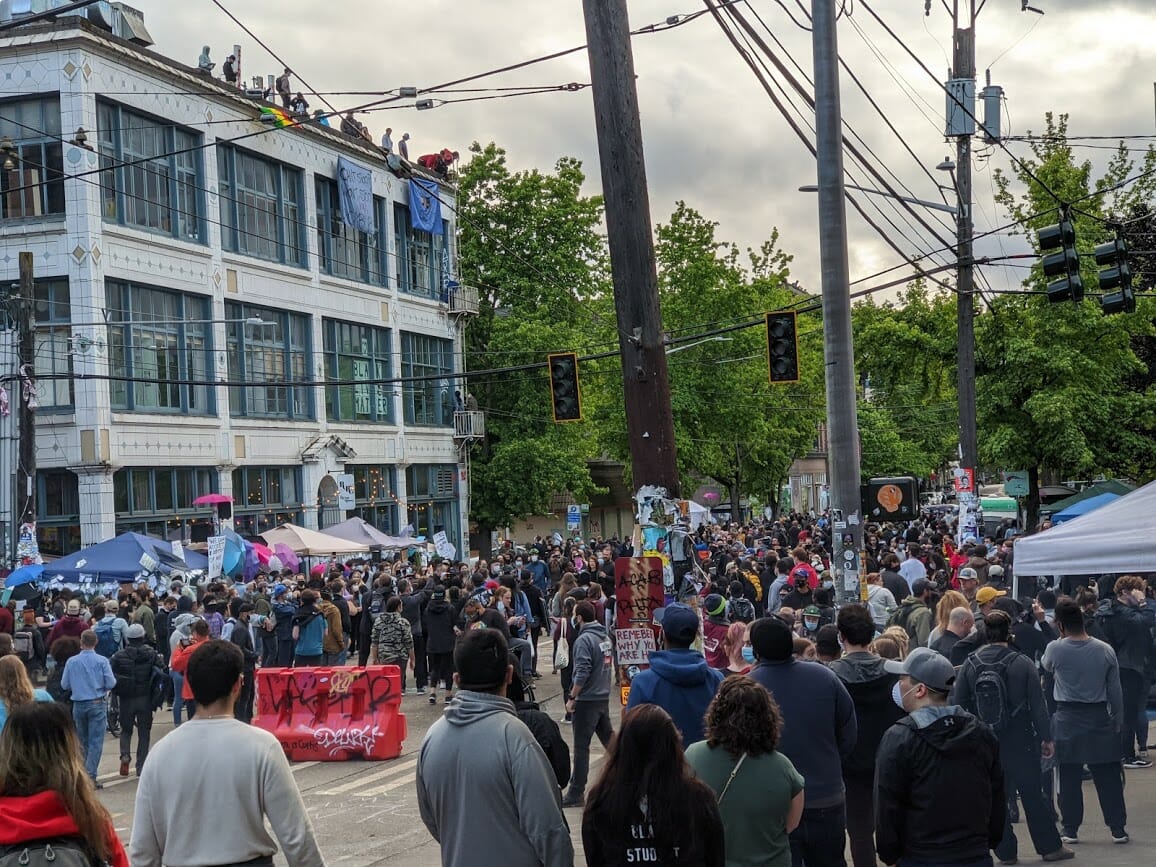
This protest area is unlike what I have experienced. There were tents set up with food, clothing, water, masks, and hand sanitizer, as we are still in a pandemic.
Photograph by Rev. Mindi Welton-Mitchell
Protest Chaplain—A report from Seattle’s Capitol Hill
By Rev. Mindi Welton-Mitchell
June 15, 2020
Seattle has been a hotbed in 2020, first for COVID-19 and now for the protests following the murder of George Floyd by police. The media has covered the protests in depth, but much misinformation has been shared. What has been portrayed by news outlets across the country, even from live streamers online, has been a narrow view.
Following the May 25 murder of George Floyd in Minneapolis by police, protests formed around the country. In Seattle, protests started in downtown but soon moved to center in the Capitol Hill area of Seattle, around Cal Anderson Park and the East Precinct of the Seattle Police Department. While the first few nights of the protests included some looting and car fires, by June 1 the message was clear that those were outside agitators, not the peaceful protesters that were gaining numbers each night. Still, all protesters were met with rubber bullets, concussion grenades and flash bangs, and tear gas.
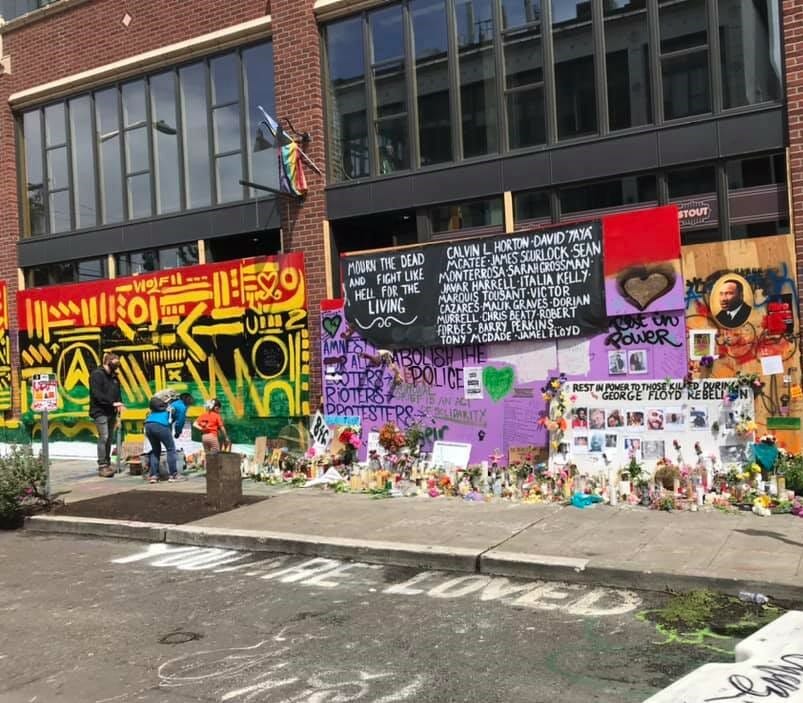
George Floyd memorial in Capitol Hill, Seattle.
Photograph by Rebecca Mabanglo-Mayor
Tear gas was deployed almost every night, the clouds of gas so thick they entered the nearby homes and apartments. On Friday, June 5, the Seattle Police Chief stated publicly that the use of tear gas would be banned for thirty days, except by SWAT teams after they received permission. On Sunday, June 7, tear gas was used again on protesters by order of the Chief of Police. As of June 12, a temporary restraining order banning the use of tear gas was issued by a judge after the ACLU and Black Lives Matter—Seattle/King County sued the Seattle Police Department over its use of tear gas against protesters.
Police set up barricades on the streets, and even during quieter times when only a dozen or so protesters near the police barricades by the East Precinct, the police presence was intimidating. I visited Friday, June 5 at 1:00 in the afternoon, just to check in after a prayer vigil at St. James Cathedral in Seattle. Police vehicles blocked intersections with lights on. Officers stood at the barricades staring at protesters. Neighbors around Capitol Hill began to stream on Facebook the protests that first weekend of June.
Clergy were involved from the beginning. Black pastors spoke at the first protests, and clergy of all faiths and backgrounds were present in the marches. A Moment of Prayer and Lament was held on Friday, June 5, with clergy from different faith traditions holding silence for 8 minutes and 46 seconds. After the police pulled out of the East Precinct building in Capitol Hill, protesters occupied a six-block area—the Capitol Hill Organized Protest—clergy gathered to be present with the protesters there. While there are still marches going on with clergy present, in this new protest area, designed as a teaching space, Seattle clergy felt a need to be present, to offer spiritual support, a listening ear, and prayer.
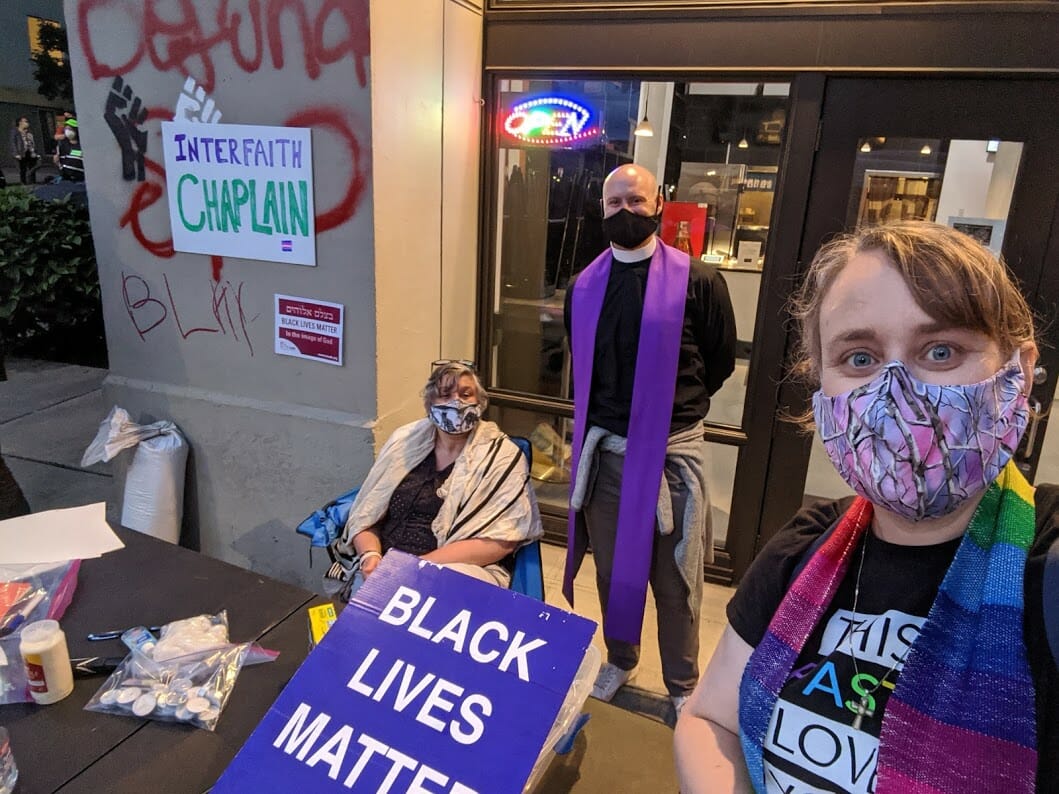
Photograph by Rev. Mindi Welton-Mitchell
When I arrived at Cal Anderson Park in Capitol Hill, I first noticed the gatherings of people, in groups of two or three. Most people still trying to socially distance and almost everyone wearing masks.
I walked the perimeter of the park and as I approached the East Precinct, my breath was taken away by the art. Amazing artists are painting murals, expressing the pain and sorrow of so much loss due to police violence. Names of Black and indigenous victims were painted on walls, shared in chalk on the streets, on posters all over the block.
A small crowd had gathered around the signs stating, “You Are Now Entering Free Capitol Hill.” Everyone is stopping to take a picture there, a mark that something different has happened. There are barricades set up—the same barricades that the police used to keep the people out are now being used to keep cars from driving in and harming protesters, as happened earlier in the week, and a person was shot trying to stop the driver.
This protest area is unlike what I have experienced. There were tents set up with food, clothing, water, masks, and hand sanitizer, as we are still in a pandemic. People handed out information about Black Lives Matter and voting. A medical tent was set up. Volunteers went around periodically to pick up trash and recycling, others with snacks and water. More than once, someone stopped to check in and see if I needed anything.
This protest area is unlike what I have experienced. There were tents set up with food, clothing, water, masks, and hand sanitizer, as we are still in a pandemic. People handed out information about Black Lives Matter and voting. A medical tent was set up. Volunteers went around periodically to pick up trash and recycling, others with snacks and water. More than once, someone stopped to check in and see if I needed anything.
A stage was set up in front of the Seattle People’s Department (what is spray painted on the precinct office sign). Currently, it is boarded up, and except for a couple of banners hung and a memorial to George Floyd, it was left alone There were a few attempts over the last few days to cause damage to the precinct, but other protesters stopped them.
From the stage, we heard voices: Black voices of all ages, but also younger black, Asian, and Latino voices, and a white woman who is neurodiverse, who raised her concerns as an aneurotypical person, with police encounters and also with protests. Queer voices were present throughout. The majority of those who spoke yesterday were younger than me. Some of those who spoke over the night shared their pain and anger.
Our chaplain station is simple: hand sanitizer and masks, some candles, and a sign saying Interfaith Chaplains. Several people told us they were glad we were there. One person came up and shared how much they miss their church right now. Another requested prayer for her family. One night, one of the rabbis led a memorial service in front of the precinct, for all those present grieving the loss of their loved ones to police violence.
Part of why this protest and others are lasting so long is that we have a country full of lonely folks from COVID-19. Grief has been bubbling up from so much loss, and people need each other. Though COVID-19 is still a real danger, the pandemic of racism must be defeated.
Part of why this protest and others are lasting so long is that we have a country full of lonely folks from COVID-19. Grief has been bubbling up from so much loss, and people need each other. Though COVID-19 is still a real danger, the pandemic of racism must be defeated.
People spoke with us about the violence they had experienced. The tear gas was bad enough, but the car driving in the other day still shakes this community. The trauma experienced the protesters, of all races and backgrounds, was palpable. Mental health professionals are volunteering their services for the protesters, especially for Black and indigenous persons of color.
One thing that surprised me was when one of the speakers said they were glad so many white folks showed up and there were signs that read, “White Allies: Thank You for Having My Back.” They also warned us that we (white people) are not used to this violence from police, that we might get hurt, that we might get shot, and we need to be vigilant. Some are treating the area like a block party (Capitol Hill has one every year) and this is not a block party, it is a protest, even when it has a very positive, loving, caring vibe.
It is a protest. The message, first and foremost, is that Black lives matter. Secondly, it is a memorial: to George Floyd and Breonna Taylor and so many others. A memorial to black transgender lives lost. A reminder that all Black lives matter. There are candles set up in front of a painting of George Floyd, along with moments of silence, prayers and laments shared from the stage.


Photographs by Rev. Mindi Welton-Mitchell

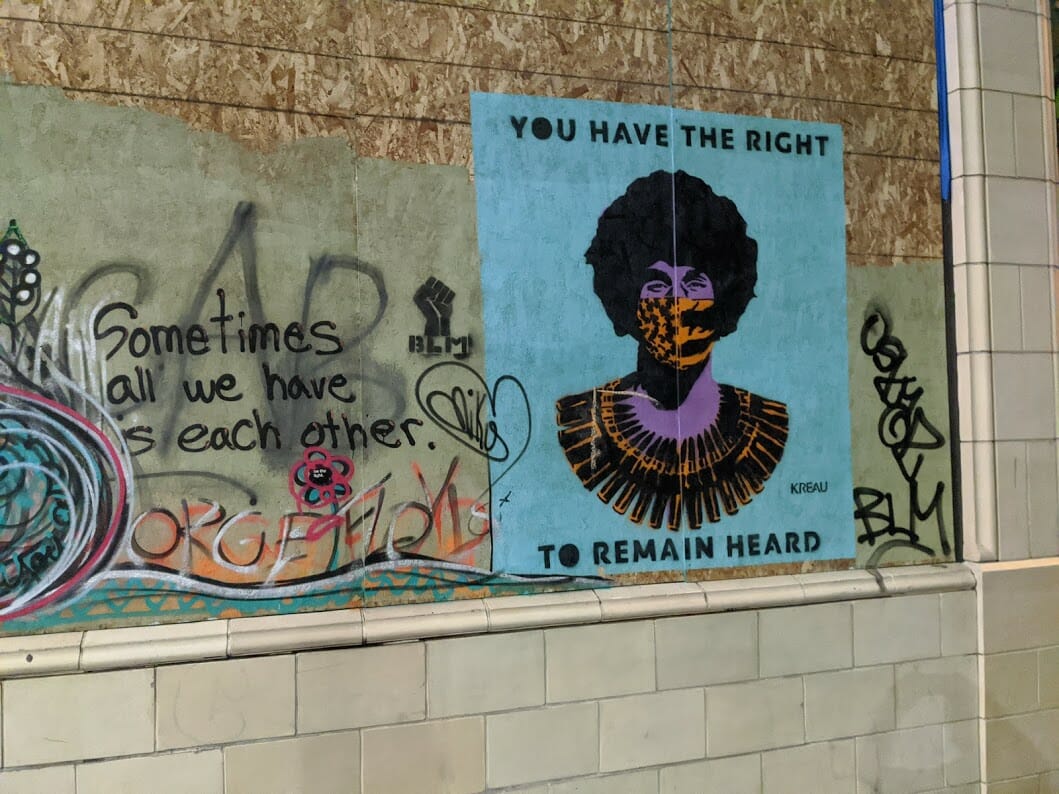
It’s also community that has a vision of something different. One of the speakers announced that things would quiet down from 7:00 to 9:30 p.m., because the families in the community needed some quiet to get their kids to bed. This in response to a request from families that live in the apartments nearby. Later in the evening, there was a concert with the Marshall Law Band, and they spoke of art as resistance. And there is art everywhere. Murals, paintings on canvas, impromptu memorials with flowers and candles, messages in chalk of encouragement and love. Following the concert, a screen was set up to show documentaries and to keep the rest of the evening more subdued for neighbors. At the park there are teach-ins, a makeshift library, and more resources for people to learn about how to engage our elected officials, and to center Black and indigenous voices.
One neighbor who talked to me to process what had happened said, “I don’t know what the long game is, whether this will last, but what I do know is that I’ve seen how things can be different. We know it’s possible now, whether this lasts or not.”
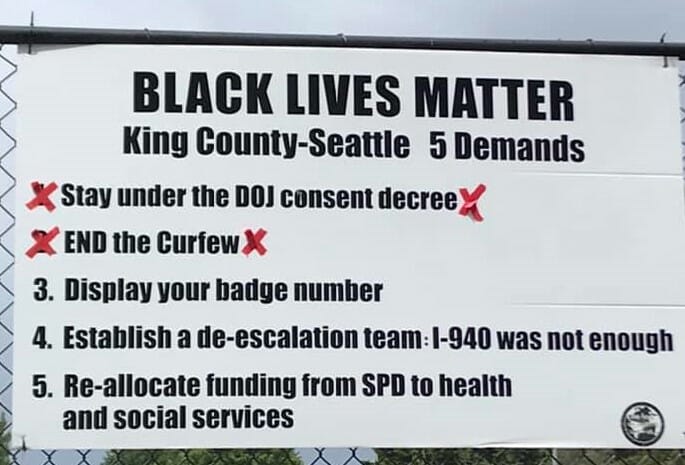
Photographs by Rev. Mindi Welton-Mitchell

The role of a protest chaplain is to help provide spiritual care and support to protesters, and to help provide space and spiritual meaning to what is happening. I believe we are also called to be truth-tellers. One of our roles can simply be to help share the message of what is really happening, instead of the rumors. We are called to listen and help others make meaning of what is happening around them. We don’t have to agree with all the messages, we simply have to listen. We are called to be present, and to remind the people that God is there with them.
The Rev. Mindi Welton-Mitchell is pastor of Queen Anne Baptist Church, Seattle, Wash., and ministry associate of social media for the Evergreen Association of American Baptist Churches USA.
The views expressed are those of the author and not necessarily those of American Baptist Home Mission Societies.


